The Beginner’s Guide: Parody
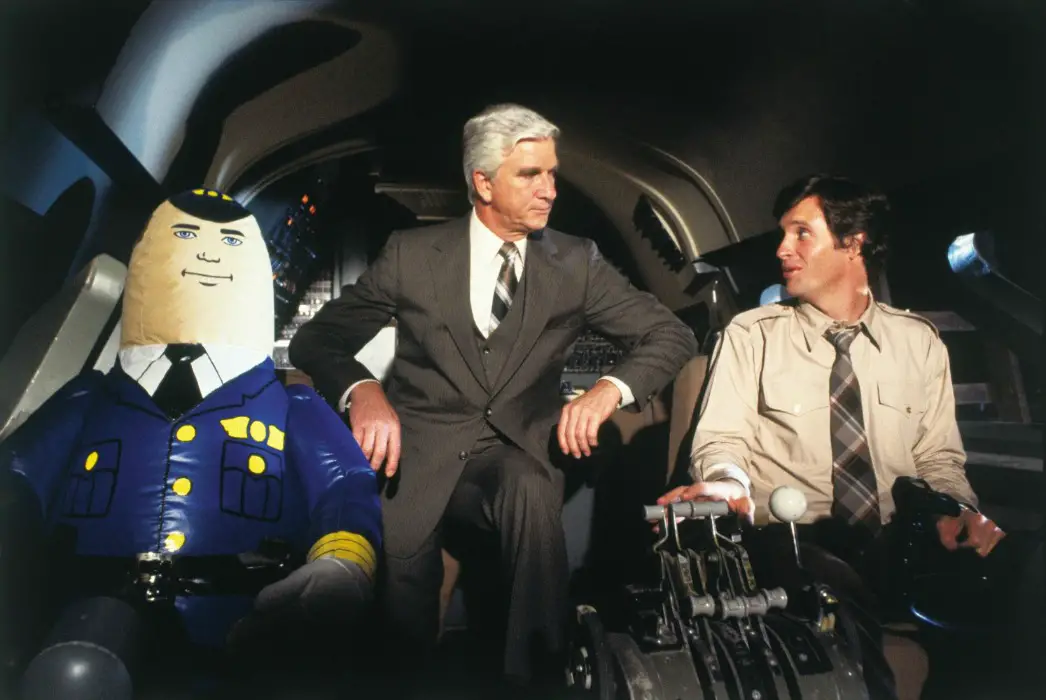
Amanda Mazzillo is a writer with an MFA in Dramatic…
In recent years, the parody film has developed a bad reputation from a seamlessly never-ending cycle of poor films in the genre. The genre has always been one of my favorites. Watching Young Frankenstein as a child opened up my appreciation for film, comedy, and parody. Since then, I have been interested in the history of comedy and finding those special films throughout the decades.
Parody has been around since the early days of cinema. One of the first parody films was an all child sequel to The Great Train Robbery. The film was called The Little Train Robbery and both films were directed by Edwin S. Porter. Even in 1905, audiences were open to laughing at their previous film achievements.
Parody and Satire are closely related genres, yet the main difference between the two is the reason behind making the film. A parody is more often a representation of appreciation, while a satire is more often a discussion pointing towards something which must be addressed. Both genres are supposed to be comedic, yet parody is done with the sole purpose of entertaining through positive imitation, while satire aims to improve humanity by pointing out the major flaws of an object through ridicule.
Parody continued into the 1910s with The Mystery of the Leaping Fish, a Sherlock Holmes parody giving prominence to the detective’s drug habit. The parody continued to grow, taking off with the Abbott and Costello films of the the 1940s and 1950s. By the late 1960s, Mel Brooks‘s memorable career in parody films had taken off.
1970s Parody: Mel Brooks and Murder By Death
One of the parody films that always comes to mind when discussing the genre is the 1974 film Young Frankenstein. Like any good parody film, Young Frankenstein comes completely from a place of affection. By getting the tone right, Young Frankenstein went on to be one of the most memorable films in the parody genre. The film succeeds in making fun of its source material without ever feeling petty. The physical comedy flows from scene to scene, mixing perfectly with the classic Frankenstein set designs. Using a black and white color scheme adds wonders to this film. It looks and feels like the original universal monster film from 1931.
In addition to capturing the tone so completely, the film also boasts a cast filled with remarkable comedic performances. Madeline Kahn had previously shown her talents in What’s Up Doc? and Paper Moon, yet her performances in Young Frankenstein and Blazing Saddles introduced her to audiences in a big way. Her performances were always wonderful, utilizing her many different talents to create memorable characters and moments.
Peter Boyle‘s performance as the monster is well-remembered for adding even more levels of kindness and humanity to the misunderstood character. These traits existed in the original character, but his portrayal takes all this to a new level, giving him a musical number, and not shying away from his romantic side.
Young Frankenstein is a wonderful film, showing respect and love to the classic monster film, while also working to create new creative relationships between its cast and crew, who went on to star in future Mel Brooks projects as well as in other projects together. Marty Feldman, Gene Wilder, and Madeline Kahn went on to make the Sherlock Holmes parody The Adventure of Sherlock Holmes’ Smarter Brother. Madeline Kahn went on to star in the next Mel Brooks film I will discuss, the Alfred Hitchc*ck parody, High Anxiety.
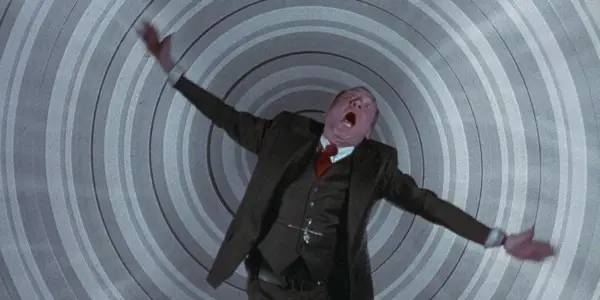
The comedy of Mel Brooks films comes from a place of remembrance and respect, and High Anxiety follows in this tradition. This film is an extremely affectionate exploration of Alfred Hitchc*ck‘s filmography. Hitchc*ck attended an early screening of the film, and he sent Mel Brooks a case of wine to show his appreciation.
High Anxiety pays homage to more than fifteen Alfred Hitchc*ck films though scenes reminiscent of classic Hitchc*ck scenes, all the way to referencing people involved in the making of Hitchc*ck‘s films showing up in small ways throughout.
The comedy is not just a list of references to all these different films, but it’s well formed jokes based around elements found in all the films referenced here. A good parody matches the tone and style of the source material, while still creating something new and entertaining within the world of the original work.
The 1970s also brought us the murder mystery parody film Murder By Death. This film honors and makes fun of classic murder mystery novels and films, such as Agatha Christie‘s And Then There Were None.
The film features a cast of British and American actors playing parodical versions of fictional sleuths. Neil Simon wrote the film, which became a staple of the parody genre, even going on to inspire the 1985 film adaptation of the board game Clue, also starring Eileen Brennan.
1980s Parody: Innovations to the Art of Imitation
One of the most referenced parody films of the 1980s is Airplane!, which is a parody of the popular disaster film genre. One of the differences between Airplane! and other parody films is how closely it matches Zero Hour!, the film for which it is primarily inspired.
Many of the scenes lifted from then Zero Hour! script lead in to memorable Airplane! jokes, taking the existing dialogue and making something funny and unforgettable. Zucker, Abrahams and Zucker bought the rights for Zero Hour!, which let them remake so many of the scenes with similar dialogue, camera angles, and staging. Airplane! was an innovation in the genre by using a higher amount of existing dialogue to lead in to their own jokes.
In previous parody films, scenes were recreated, but not with this much material from the original film. Using this percentage of the original dialogue in the scenes they chose to recreate ended up making the jokes they added land even harder, since a surreal dissonance was created between the original dialogue and the newly crafted verbal and physical humor.
The film is highly regarded for its blend of slapstick and surreal humor, which is still just as appreciated now as it was when the film was first released. Airplane! is commonly regarded as one of the greatest comedy films of all time.
Carl Reiner‘s 1982 film Dead Men Don’t Wear Plaid helped take the parody genre in new and exciting directions. The film blends classic film noir footage with newly created footage starring Steve Martin opposite these classic performers.
The combination of new and existing footage created an interesting and unique film experience. Using footage from the genres you are parodying does not sound like a great idea, but it works wonderfully playing against comedic recreations telling their own story.
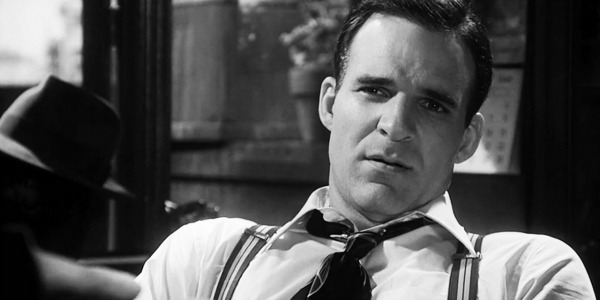
This parody of film noir and 1940s pulp detectives should be remembered for its comedic sensibilities as well as its masterful creations of scenes flowing perfectly with existing footage from decades previously.
The new footage is well done in capturing the tone of the films from which the existing footage was taken. The lighting and shadows had to blend in seamlessly with the original film noir footage. Crafting jokes based around snippets of classic film dialogue, while also creating a new story by stringing together all these scenes from different films is a film achievement, making Dead Men Don’t Wear Plaid an innovative addition to the parody genre.
Another unforgettable 1980s film in the parody genre is This Is Spinal Tap, directed by Rob Reiner and written by Christopher Guest. This Is Spinal Tap exists in the sub-genre of mockumentary, but that does not take away from its place in the history of the parody.
This film introduced the world to the team of Michael McKean, Harry Shearer, and Christopher Guest, who had success working separately and together, but this film solidified their place in the parody genre.
This film brought about the parodical mockumentary career of Christopher Guest, which includes Best In Show, A Mighty Wind, and Waiting for Guffman. This Is Spinal Tap parodies musician and band culture in such an accurate way, it made different bands all think the film was specifically a parody of them and their rock and roll tours. The film utilizes the music as another layer of the comedy. In addition to all the jokes found in the dialogue and scenarios, the music itself is affectionately digging at musicians through mimicking their style with humorous lyrics.
This Is Spinal Tap is still regarded as the premier music parody being shared and discovered by musicians and comedians alike. This film deserves its place in comedy and film history. Countless people reference this film in their daily lives, and I hope this doesn’t stop anytime soon.
1990’s Parody: Nostalgia in the Resurgence of the Parody
The 1990s brought more parody films into the mainstream, resulting in many of the parody films from this decade being forgotten over time. The two 1990’s parody films I will revisit are based around television nostalgia.
Galaxy Quest is appreciated as a cult hit, which makes sense for a film about the cult fandom of science fiction television. The film based itself primarily on fans of the various Star Trek television series throughout the years. By focusing on the cast of a science fiction surrounded by their fans, Galaxy Quest was able to succeed as a parody and a love letter to science fiction fans.
Having the fans be the ones to save the day because of their knowledge of the show was a wonderful and heartfelt way to end the film. This level of adoration should exist in all parody films. So many parody films have come from a place of hate, and those are the ones that always fail and paint a bad picture of what a parody film can achieve.
Galaxy Quest perfectly mixes the tropes of science fiction television and the tropes surrounding the fan culture of science fiction television. By doing this, they ended up making a film nostalgic, yet looking towards the future of new fans discovering these shows years down the road.
Unlike other parody, this explores meta comedy of being in a world where a show exists both as a show and as something seemingly real. Galaxy Quest is a science fiction film where science fiction is seen as a type of genre with very specific types of fans, but is also itself a film within that genre, where aliens are real, and apparently watching old episodes of Earth shows from their home far off in space.
Both The Brady Bunch Movie and A Very Brady Sequel have stuck with me throughout the years. The combination of this perfect 1970s family with the more cynical culture of the 1990s worked so well to create a unique comedic landscape. The sequel goes even further with exploring the relationships between the characters in different, not so innocent, ways. The first two Brady Bunch movies managed to explore the series in a slightly darker and less innocent way while remaining affectionate and indebted to the original series and its characters.
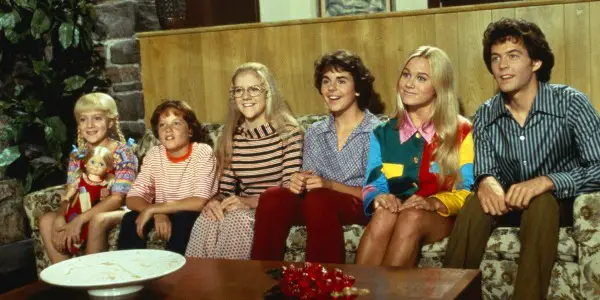
The movies managed to cast comedic talents with just enough similarities to the original characters, but enough individuality to create their own identity and legacy. Gary Cole‘s performance as Mike Brady brought the character to another level by taking his common speeches of advice and turning them into overlong convoluted rants about everything, and nothing, but always going back to family values at the end.
Jennifer Elise Cox crafted a memorable performance in her version of Jan Brady, conflicted by her ever growing inner voices pushing and pulling her in differing directions throughout the film. Her inner voices started as fairly normal concerns about Marcia, but they progressed throughout the films into something darker. Her facial expressions throughout the film were stellar, and even when the same types of scenes happened, the film never fell flat.
These films are good examples of parody because they manage to take something and go just far enough to make it seem ridiculous without going over the top and cutting themselves off from the original. If the jokes in this film went too far, we might lose the connection and affection for the original series, but as these first two films stand, this never happens.
This might seem like a strange choice, since so many more remembered parodies came out in the 1990s, but The Brady Bunch Movie and A Very Brady Sequel felt underappreciated and a great place to start if you are looking for nostalgic parody. Each film takes different tropes and explores them against current society values. Seeing the Brady family interact with families clearly absorbed in the 1990s is a treat, which creates the perfect landscape for parody. The characters are not molded into our society, yet they are shown acting almost naturally against our cynicism and consumer culture, bringing that Brady charm to people so caught up in gossip and building mini malls.
2000’s Parody: Finding Hidden Gems in a Parody Dense Decade
Parody exploded in the 2000s, giving us some wonderful films in between tons of terrible parody films, which seemed to come from a place of hate for their source material, instead of the love which is the building blocks of a good parody film. The parody films from this decade I suggest trying out all come from a place of respect.
The 2001 film Wet Hot American Summer remains one of my favorite parody films, focusing on a rather specific genre of summer camp films, such as Meatballs and Sleepaway Camp. The film is inspired by the summer camp experiences of its writers, David Wain and Michael Showalter. The plot and characters in the film go back to sex comedies of the 1980s aimed at teen audiences, spoofing the tropes and relationships from those films.
Wet Hot American Summer was a critical and commercial failure at the time of its initial release, but it has become a cult classic over time. The film mixes teen comedy tropes with more surreal elements to create something hilarious and engaging, especially for an audience who remembers their own camp experiences and the type of summer camp comedies they are spoofing.
The film also looks at the trope of a seemingly normal setting being only the beginning of a much bigger plot line. In Wet Hot American Summer, the film is set to end at a talent show, but a sideplot involving the camp needing to be saved from a piece of NASA’s Skylab evolves overtime, creating something bigger than the genre of the film usually involves.
Wet Hot American Summer helped many stars get noticed before going on to bigger and more widely respected films. The film included performances from newcomers seasoned comedians alike, including Amy Poehler, Paul Rudd, Bradley Cooper, Elizabeth Banks, Janeane Garofalo, David Hyde Piece, in addition to the cast of MTV’s The State.
In 2004, the zombie romantic-comedy, Shaun of the Dead was released, and started a trilogy of spoof comedies from Edgar Wright starring Simon Pegg and Nick Frost. Shaun of the Dead explores both the tropes of zombie films and romantic comedies in a blood and beer soaked comedy.
Horror comedies have been a big part of horror cinema for years, but Shaun of the Dead worked in even more ways than the typical horror comedy by bringing in romance and making jokes of the horror genre, instead of simply making over the top gore the entirety of the comedy.
I would not consider most horror comedies parodies, but Shaun of the Dead does something special, creating an homage to the zombie genre, while still having its own well-developed and amusing plot. This is a zombie film where the characters are aware of zombies from the films, pushing it over the edge into the realm of great comedic achievements.
The other films in the Cornetto trilogy were Hot Fuzz and The World’s End. These films were all based on a flavor of Cornetto ice cream, especially the colors of the packaging: red, blue, and green.
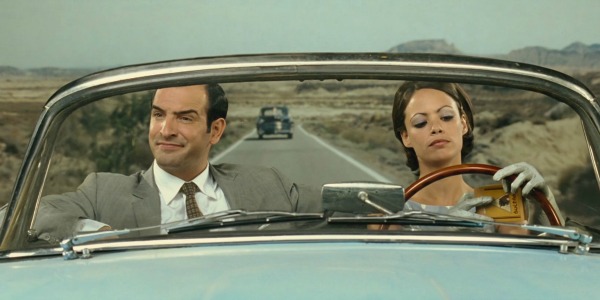
The 2006 French comedy OSS 117: Cairo, Nest of Spies is a delightful spy parody directed by Michel Hazanavicius, using the French OSS 117 novels as its main source of inspiration. This film does not just emulate euro-spy films in terms of plot, but also stylistically. The film looks and feels like a film straight out of the 1950s with its color palette, creative editing, and bouncy score.
Spy parodies have been a part of parody cinema for years, but this is the first one I’ve felt truly captures the spy film, while also expressing itself through surreal comedic moments. One of the fight scenes in the film involves throwing chickens at each other, while other jokes are much more subtle, such as a camera moving and revealing something you might not have expected.
Most of the comedy of the film comes from the unexpected changes to classic spy film scenarios. In a love scene early on, the camera pans away, but keeps panning until we see the action again. Bérénice Bejo and Jean Dujardin work so well together in this film, which helps the jokes between their characters land even stronger. The color scheme in this film works marvelously, since it is so in tune to the films it is parodying. At times, the film is so well colored and shot, it makes the absurd comedic moments stand out and surprise against a stylish background.
2010’s Parody: What is the Future of Parody?
Looking at recent parody films makes me wonder where this genre will go in the future. Will we continue to have wonderful parody films like we have found in each previous decade? So far, I think the best parody films of this decade are the MacGruber (2010), Popstar: Never Stop Never Stopping (2016), and surprisingly, the Disney Channel Original Movie, Teen Beach Movie (2013). These films stand out against the sea of hateful parody films.
MacGruber is the first SNL film since 2000, and the wait was very much worth it. The film is a parody of the television series MacGyver and it stars Will Forte, Kristen Wiig, and Ryan Phillippe. MacGruber works well through the personalities of its cast and their ability to build unforgettable comedic moments through awkward moments, sex scenes, violence, and ingenuity.
Nothing is taken too seriously in MacGruber, which lets you fully immerse yourself in its comedic universe. The film plays off tropes found in the television series MacGyver, as well as more general action tropes. The sex scenes in the film are among then funniest I have ever seen. The way they build on the overly musical and sensual scenes of classic action films. MacGruber takes these glamour-shot style sex scenes and turns them on their head through awkward close-ups, grunts, and sweat.
One of the classic scenes from MacGruber is a rather silly take on a classic MacGyver trope: utilizing random items to get out of any situation. In the film, MacGruber is supposed to make a distraction using only the items he has available, including a stalk of celery. Instead of crafting some useful item out of the seemingly random collection, he creates a visual distraction using just his naked body and the stalk of celery.
Another recent parody film I found a worthy representation of the genre was last year’s film Popstar: Never Stop Never Stopping. The film seems like a basic parody of Justin Bieber, and that is a part of it, but it becomes an even bigger parody of celebrity and internet culture. This might not seem like an all out affectionate parody at the beginning, but once you keep listening to the music, you discover how respecting The Lonely Island is to all these different styles of popular music.
Through watching the film and listening to the music, you can tell how deep down their love of music goes. The Lonely Island are not just making fun of popular music, they are embracing the ear worms we listen to every year without fail. The soundtrack is easily absorbed time and time again, as the music is all based around different styles of catchy music, with lyrics pointing fun at these very genres and their prominent artists.
The film pokes fun at so many different areas of music without feeling like any one artist or style is deemed lesser. If a film like this was made by people who were not such big fans of music, it would not work quite so well. The music itself is good, the ability to write music and lyrics is paired with the excellent ability to form comedic connections.
The music in this film deserved more recognition, as well as its ease in keeping with the mockumentary genre throughout the film. Mockumentaries typically fall into standard comedy films as they progress, but Popstar: Never Stop Never Stopping was able to keep the documentary style present throughout the film, allowing the comedy to truly develop from the form, becoming something special in the parody genre.
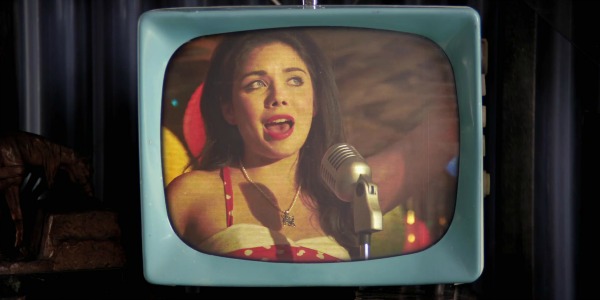
One last current parody film I would like to discuss is the Disney Channel Original Movie, Teen Beach Movie. This might seem like the type of film you would try to avoid when children want to watch it, but if you give it a chance, you will discover a wonderfully delightful parody of beach comedies as well as movie musicals, and even slightly B science fiction films.
“Can’t Stop Singing” is an especially meta and parodical number in the brightly colored parody. The music in the film flows very well with the previous actions. In this song, the characters know they are stuck in a musical, since their words are now becoming a song with planned choreography.
Having two characters with the opposite opinions on musicals works well with letting the moments of parody flow through their reactions to the same examples of tropes. Mack (Maia Mitchell) wants to get out of their musical number, while Brady (Ross Lynch), who is a fan of the movie musical they are trapped in, wants the song to continue, and does not want to find a way out as quickly.
As the film progresses, the main characters become more a part of the film, their hair stops getting wet when they go in the ocean, falling into musical numbers, and becoming a part of the films B science fiction plot. By the end, the main characters are involved in helping the characters of the film within a film save their world, by bringing together bikers and surfers in a mix of West Side Story and a beach party film.
Weirdly, this Disney Channel film reminds me of the horror comedy Psycho Beach Party with how they both explore and dismantle the innocence of the beach party genre. Teen Beach Movie ends up giving autonomy to the film within a film characters, especially helping the female characters realize their worth outside of their supposed love interests.
Conclusion
The parody genre has been around since the beginning of cinematic history, and each decade has some films worthy of discovery. Parody will continue to evolve and change into the future as we become tired of our current genre conventions. Parody can be stale, especially when it comes from a place of hate rather than love and appreciation.
Which parody films are your favorites? Do you think the genre will continue to strive as we move through our current genre conventions?
Does content like this matter to you?
Become a Member and support film journalism. Unlock access to all of Film Inquiry`s great articles. Join a community of like-minded readers who are passionate about cinema - get access to our private members Network, give back to independent filmmakers, and more.
Amanda Mazzillo is a writer with an MFA in Dramatic Writing from SCAD and a BA in Writing & Linguistics and Film Studies minor from Georgia Southern University. She enjoys writing comedy and exploring all forms of media. Her Twitter name is a bad pun: @mazzillofirefox













